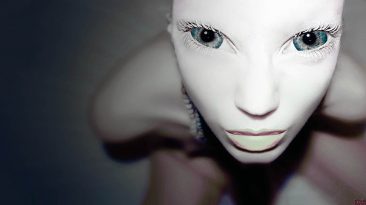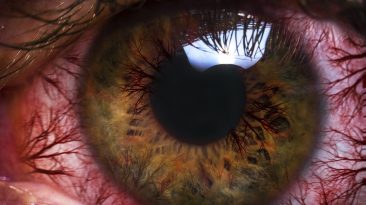If you could peek into someone else’s dreams, what would you see? Would they be fully-realized scenes with clearly defined people and environments? Or would they just be a big jumble of colors and sounds?
The idea of watching someone else’s dreams might sound impossible, but scientists are surprisingly close to making it a reality. How would they capture your unconscious thoughts?
Could that help us make sense of our dreams? What dangers could be involved?
In 2017, scientist Daniel Oldis discovered a method to convert dreams into digital information. While his team was excited about learning the nature of our dreams, others were worried about the implications of our dreams going digital.
For instance, how long would it take before someone figured out how to hack into them? Humans spend approximately two hours a night dreaming, spread between five or six dreams; but we forget about 95% of those dreams within seconds of waking up.
As a result, every morning we’re left trying to piece together fragments of the bizarre stories our minds cooked up overnight, trying to make sense of them. Over the years, people have tried to figure out the mysteries of why we dream.
Neurologist Sigmund Freud suggested that dreams are a gateway to the repressed sexual and aggressive instincts that drive us all. Psychiatrist Carl Jung saw dreams more as pure expressions of the brain, a way to simplify things and offer solutions to the problems we face when we’re awake.
On the other hand, Harvard psychiatrists J. Allan Hobson and Robert McCarley took a much less poetic approach. They thought that dreams were nothing more than the brain’s attempt to make sense of the neural activity that takes place during deep sleep.
But these are all just theories. If we want to get to the bottom of our dreams, we’ll have to find a way to observe them. And that brings us back to Daniel Oldis.
Oldis decided that the best way to record and observe dreams was to attach electrodes to a sleeping subject’s arms, legs and chin. You see, when we enter our deepest level of sleep, called REM or Rapid Eye Movement, our brains still send out nerve impulses.
They reflect the body movements in our dreams. The electrodes measure these impulses, gather the information, and link it to an avatar that mimics the sleepy subject’s movements.
The team also used up to six electrodes on a subject’s mouth and throat in an attempt to decipher speech. Now Oldis is working with a “dream team” of scientists to go even further. Trying to record the speech, body movements and visuals in dreams by tapping into the brain’s visual system.
He believes that in 10 to 20 years from now, people will be able to use this technology to stream their dreams to their computers or smartphones, and play them back in the morning. But what would be the point of all this?
Sure, we could see what happened in our dreams, but would it give us a clearer perspective of ourselves? We could still misinterpret what we see, and we could even start to use them as a real-life crutch.
And digitizing our dreams could be dangerous. What if someone found a way to hack into that digital information?
They could implant subliminal messaging to affect the decisions you make. Or they could even blackmail you by threatening to expose any embarrassing unfiltered thoughts that might be recorded.
So perhaps our dreams are best kept where they belong — in our heads! Maybe we’d be better off trying to figure out how to control our dreams, rather than record them.
Subscribe to What-If on Youtube or follow the show on Facebook Watch.
Sources
- “How Close Are We To Video-Recording Our Dreams?”. Charlotte Hawks, CNN. 2019. CNN. Accessed September 5 2019.
- “Experts Weigh In With 7 Theories About Why People Dream”. Cherry, Kendra, 2019. Verywell Mind. Accessed September 5 2019.
- “The Dream Theories Of Carl Jung | Dream Studies Portal”. Hurd, Ryan. 2009. dreamstudies.org. Accessed September 5 2019.
- “Scientists Want To Make A Movie Out Of Your Dreams”. Love, Tessa, 2019. Medium. Accessed September 5 2019.
- “Scientists Are Getting Closer To Recording Your Dreams”. Strauss, Ilana, 2019. From The Grapevine. Accessed September 5 2019.
- “10 Interesting Facts About Dreams”. Cherry, Kendra, 2019. Verywell Mind. Accessed September 5 2019.



























